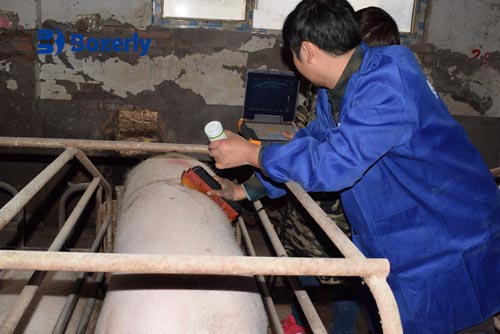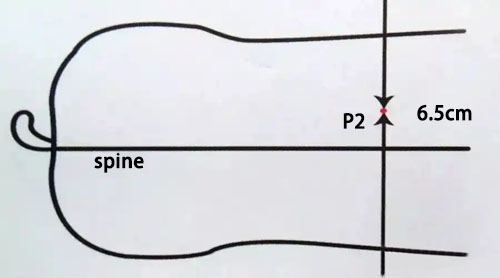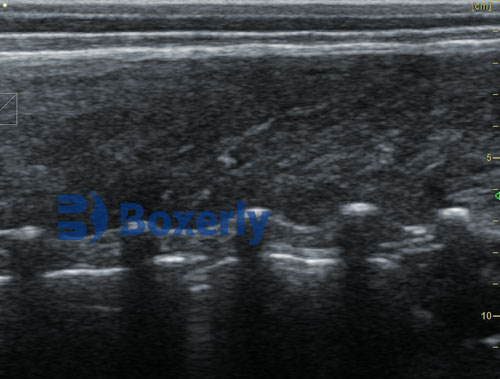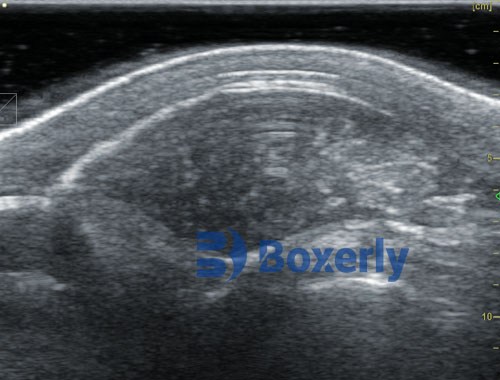Espessura de toucinho is one of the most important indicators used in modern pig farming to evaluate the body condition, productivity, and meat quality of pigs. Monitoring this parameter allows farmers to make informed decisions about breeding, feeding, and slaughtering. Em particular, backfat thickness is crucial when selecting breeding stock, as it reflects the animal’s genetic potential for leanness and feed conversion efficiency. It also helps determine whether a pig is gaining too much fat or remains too lean, which can impact reproductive performance and market value. Overall, backfat thickness plays a key role in optimizing herd management and improving economic returns.

Pig back fat thickness
What Is a Normal Backfat Thickness Value?
Backfat thickness can vary based on the pig’s breed, sex, age, and feeding program. Contudo, for most commercial pigs, the ideal backfat thickness at the last rib (P2 point) is typically between 16 mm and 22 mm at market weight (around 100–120 kg). Breeding gilts, on the other hand, should have a backfat thickness of 18 mm to 22 mm at the time of selection to ensure good reproductive performance. If the backfat is too thin, it may lead to issues such as delayed estrus, poor litter size, or reduced milk production. On the contrary, if it is too thick, it could result in excessive fat deposition, inefficient feed use, and a higher risk of reproductive failure. For boars, slightly leaner conditions are acceptable, with 14–18 mm often considered ideal.

DZ20 with dedicated back fat eye muscle probe
How to Measure Pig Backfat Thickness Using the BXL-DZ20
One of the most common and effective tools for measuring backfat thickness in pigs is the BXL-DZ20 ultrasonic backfat scanner. Here’s a step-by-step guide to measuring backfat thickness accurately:
-
Restrain the pig securely, either in a chute or with the help of an assistant, to minimize movement and stress.
-
Locate the measurement point—usually the P2 position, which is located approximately 6–7 cm off the midline of the pig’s back at the level of the last rib.
-
Clip or clean the measurement site to remove excess dirt or hair, ensuring good contact between the probe and the pig’s skin.
-
Apply a coupling gel or spray water on the measurement site to ensure proper ultrasound transmission.
-
Turn on the BXL-DZ20 device, select the appropriate species and measurement mode, and gently press the probe against the cleaned area.
-
The device will display the backfat thickness in millimeters on its screen—typically as an average of multiple readings.
-
Record the data and, if necessary, repeat the measurement to confirm accuracy.

Pig back fat eye muscle detection position
Regularly monitoring backfat thickness using a reliable tool like the BXL-DZ20 helps maintain herd health and productivity. It allows for early detection of body condition issues and facilitates better breeding and nutritional decisions.

DZ20 measures pig back fat thickness and eye muscle area(1)

DZ20 measures pig back fat thickness and eye muscle area(2)
Conclusão
Backfat thickness is a vital metric in pig production that directly impacts meat quality, reproductive performance, and profitability. Understanding what constitutes a healthy range, and consistently monitoring it using tools like the BXL-DZ20 ultrasound scanner, can help farmers make better management decisions. Whether you’re selecting breeding stock or preparing pigs for market, accurate measurement of backfat ensures animals are in optimal condition for their intended purpose. Incorporating this simple but powerful practice into your management routine can lead to significant long-term benefits for your farm.